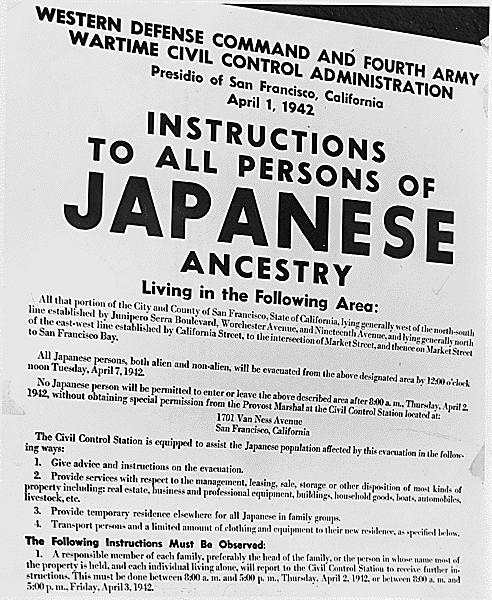
Executive Order 9066 (Japanese Internment)
The Japanese attack on Pearl Harbor led to concerns that there were spies among the Japanese communities in the West and inflamed long-standing racism towards Japanese Americans. President Roosevelt issued an executive order for the internment of Japanese Americans to prevent espionage on the home front.
The bombing of Pearl Harbor generated fear of further Japanese attacks, suspicions that some Japanese immigrants might be spies, and inflamed racist sentiment towards Japanese Americans living in the US. Once the executive order was issued, Japanese Americans living primarily on the West Coast were rounded up and placed into detention centers located in remote areas of California, Washington, and Oregon. Approximately 120,000 people were forced into the camps, losing businesses, farms, and in some cases their lives; 70,000 were American citizens.
In contrast, and despite Nazi Germany’s aggressions towards American vessels of the Atlantic coast, German-Americans were never rounded up and placed in detention camps.
In 1942, Fred Korematsu, a Japanese American citizen, was arrested for refusing to comply with the order. Supported by the American Civil Liberties Union, he challenged his internment in court. His case made it to the Supreme Court, which ruled against him, arguing that the internment camps were based on “military necessity” rather than race, and were therefore constitutional.

